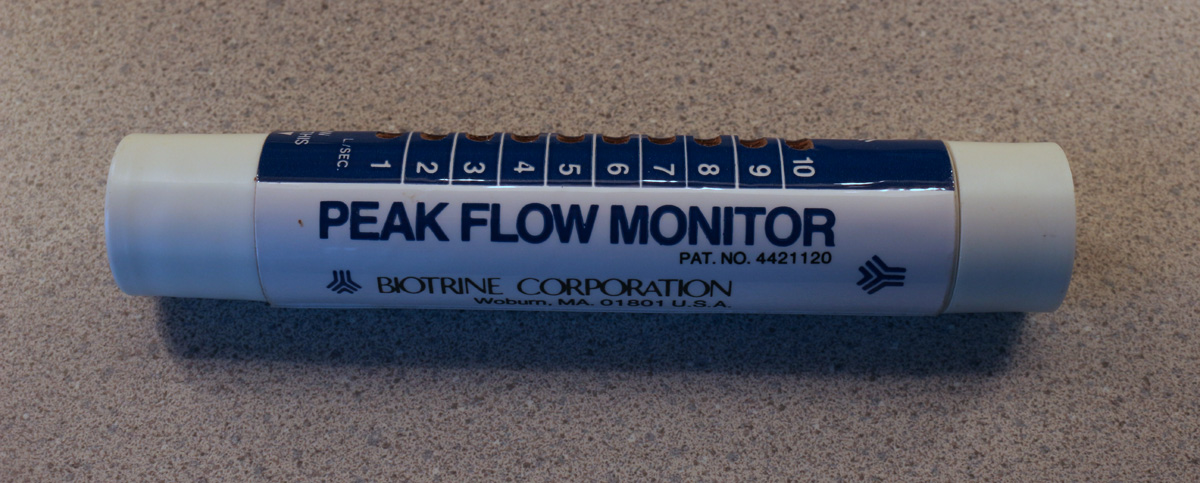
Photo is courtesy of Richard H. Lord of µPward Concepts. His description: “It is 6.5″ long by 1″ in diameter consisting of a 4.5″ long cardboard tube with a plastic mouthpiece tube inserted in one end. A plug was inserted in the other end containing a buzzy reed whistle much as you might find in a duck-call or a party favor, but mounted so that the air to actuate it passed through a small hole that could be sized to calibrate its sensitivity, so that a fixed known air pressure was required for the reed to buzz. The cardboard tube also has a series of ten oval holes running along its length, each of slightly increasing width, through which air could escape. A piece of tape was used to cover one or more of these holes starting at the far end of the tube. With all holes covered except the one nearest the mouthpiece, a flow rate of one L/s was required to cause to make the buzzing sound. Uncovering each additional hole added the need of an additional L/s of flow to create the buzz, with a total of 10 L/s required if all ten holes were uncovered. The doctor would establish a target value by taping over the appropriate number of holes, and the patient could then take the tube home with him or her and could practice achieving that target flow rate. Simple and yet very effective !!!”